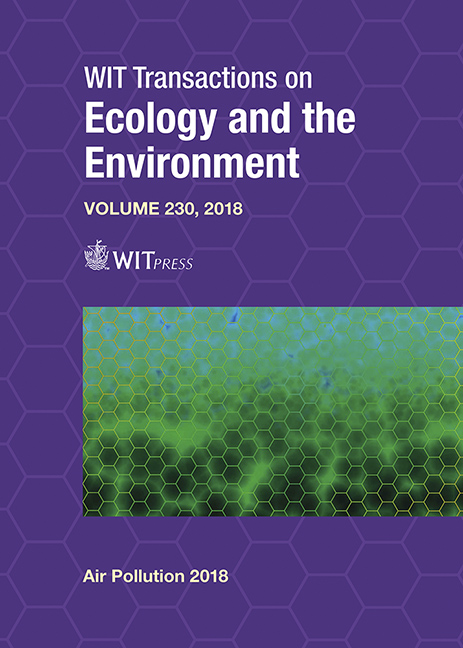UNDERSTANDING THE CHAOTIC BEHAVIOR OF PARTICULATE MATTER CONCENTRATIONS USING NONLINEAR TECHNIQUES
Price
Free (open access)
Transaction
Volume
230
Pages
12
Page Range
129 - 140
Published
2018
Paper DOI
10.2495/AIR180121
Copyright
WIT Press
Author(s)
GIOVANNI ANGELO SALINI
Abstract
We have made a comparative study about the nonlinear behaviour of PM2.5 hourly average concentrations, which were measured at some of the most polluted mid-sized cities located in the South of Chile. The chosen cities were Chillán, Coyhaique and Temuco where high PM2.5 concentrations concentrated in the winter season are caused by the intensive use of wood for heating. The city of Cochabamba, Bolivia, has also been included in this study, due to its very high level of atmospheric pollution by PM10 (especially in the winter season).This city is at a greater height compared to the Chilean cities. Using nonlinear tools, as Wavelet, Recurrence Plots, and Phase Portrait we have investigated the behaviour of PM2.5 and PM10 (hourly) concentrations. Wavelet spectrum and global amplitude for the more polluted cities in study was calculated. Spectral descomposition was performed in time-frecuency through Morlet’s wavelet transform and their global amplitud in time and energy, concentrated around the most importants peaks. On the other hand, a graphical tool that shows typical patterns of dynamic behaviour is the recurrence graph allowing extraction of qualitative characteristics from time series. This method was applied for all cities in study showing patterns that differ from a noisy or random signal. Also the technique of phase-portrait analysis was implemented, showing typical dynamical patterns of non-linear time series, different to a noisy signal pattern. Finally, it was found that hourly airborne particle concentrations exhibit a possible chaotic behaviour, related to short-term predictability some hours ahead.
Keywords
PM2.5, wavelet, recurrence plots, phase portrait, AMI, FNN





